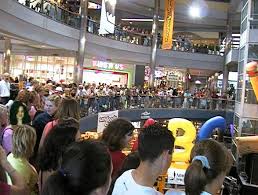Texting can be used to flirt, avoid traffic jams, balance your checking accounts, help Africa’s poor and many more. Text messaging is finally taking off in the U.S. But until the past year, U.S. text messaging had caught on only among teens and "American Idol" fans voting for their favorites. Today, this sms thing is a quite a phenomenon. About 5 billion text messages are sent a month in the U.S., up from 2.8 billion a year ago, according to the wireless trade association CTIA. But the real story is in the inventive ways this medium is being used and penetrating everyday life.
Sports teams are starting to use "texting" to bond with fans. Hair salons can use it to remind customers of appointments. You can sign up to get text updates about traffic on your commuting route and weather in your hometown. "Teen People" magazine will automatically text you breaking news about such weighty issues like Brittney Spear's striking resemblance with her dog.
It's clearly exploding,
says Sky Dayton, co-founder of EarthLink who is running a U.S. joint venture, SK-EarthLink, with South Korea's biggest cellular operator.
It's an example of how a medium evolves into something you never expected it to. Who knows where it will go from here.
We're starting to see major brands utilize text messaging. That's new
,
says Alex Campbell, CEO of Vibes Media, which has helped McDonald's, Budweiser and the Chicago White Sox with text-messaging campaigns. But what factors lead to this sms storm in the U.S. First, there's the sheer mass of text-capable phones out there: Of 192 million active mobile phones in the U.S., 90 percent have screens and can handle text messages, CTIA says.
Mobile phones have become the third screen in people's lives. But this one is more personal,
says Neville Street, CEO of messaging company Mobile 365, the other screens being the TV and PC.
All of those phones, however, awaited a key that would unlock a texting boom: interoperability.
Complete article














































